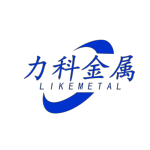The corrosion resistance of stainless steel depends on chromium, but because chromium is one of the components of steel, protection methods vary. When the addition of chromium reaches 10.5 %, the atmospheric corrosion resistance of the steel increases significantly, but when the chromium content is higher, although the corrosion resistance can still be improved, it is not obvious. The reason is that alloying steel with chromium changes the type of surface oxide to a surface oxide similar to that formed on pure chromium metal. This tightly adhered chromium-rich oxide protects the surface from further oxidation. This oxide layer is extremely thin, through which the natural luster of the steel surface can be seen, giving stainless steel a unique surface. Moreover, if the surface layer is damaged, the exposed steel surface will react with the atmosphere to repair itself, re-form this oxide “passivation film”, and continue to play a protective role. Therefore, all stainless steel elements have a common characteristic, that is, the chromium content is above 10.5% . In addition to chromium, the commonly used alloying elements are nickel, molybdenum, titanium, niobium, copper, nitrogen, etc., to meet the requirements of various uses for the structure and properties of stainless steel.
304 is a general-purpose stainless steel that is widely used to make equipment and parts that require good overall performance (corrosion resistance and formability).
301 stainless steel exhibits obvious work hardening phenomenon during deformation, and is used in various occasions requiring higher strength.
302 stainless steel is essentially a variant of 304 stainless steel with higher carbon content, which can obtain higher strength by cold rolling.
302B is a kind of stainless steel with high silicon content, which has high resistance to high temperature oxidation.
303 and 303S e are free-cutting stainless steels containing sulfur and selenium, respectively, and are used in applications where free-cutting and high surface finish are mainly required . 303Se stainless steel is also used to make parts that require hot upsetting , because under these conditions, this stainless steel has good hot workability.
304L is a lower carbon variant of 304 stainless steel used where welding is required. The lower carbon content minimizes carbide precipitation in the heat-affected zone near the weld, which can lead to intergranular corrosion (weld erosion) of stainless steel in some environments.
304N is a nitrogen-containing stainless steel, and nitrogen is added to increase the strength of the steel.
305 and 384 stainless steels contain high nickel and have a low work hardening rate, making them suitable for various applications requiring high cold formability.
308 stainless steel is used to make electrodes.
309 , 310, 314 and 330 stainless steels are relatively high, in order to improve the oxidation resistance and creep strength of steel at high temperature. 30S5 and 310S are variants of 309 and 310 stainless steel, the only difference being that the carbon content is lower, in order to minimize the precipitation of carbides near the weld. 330 stainless steel has a particularly high resistance to carburization and thermal shock resistance.
Types 316 and 317 stainless steels contain aluminum and are therefore significantly more resistant to pitting corrosion than 304 stainless steels in marine and chemical industry environments. Among them, 316 stainless steel variants include low carbon stainless steel 316L , nitrogen-containing high-strength stainless steel 316N, and free-cutting stainless steel 316F with high sulfur content.
321, 347 and 348 are stainless steel stabilized with titanium, niobium plus tantalum and niobium respectively, which are suitable for welding components used at high temperatures. 348 is a kind of stainless steel suitable for the nuclear power industry, which has certain restrictions on the combined amount of tantalum and diamond.
Post time: May-06-2023




